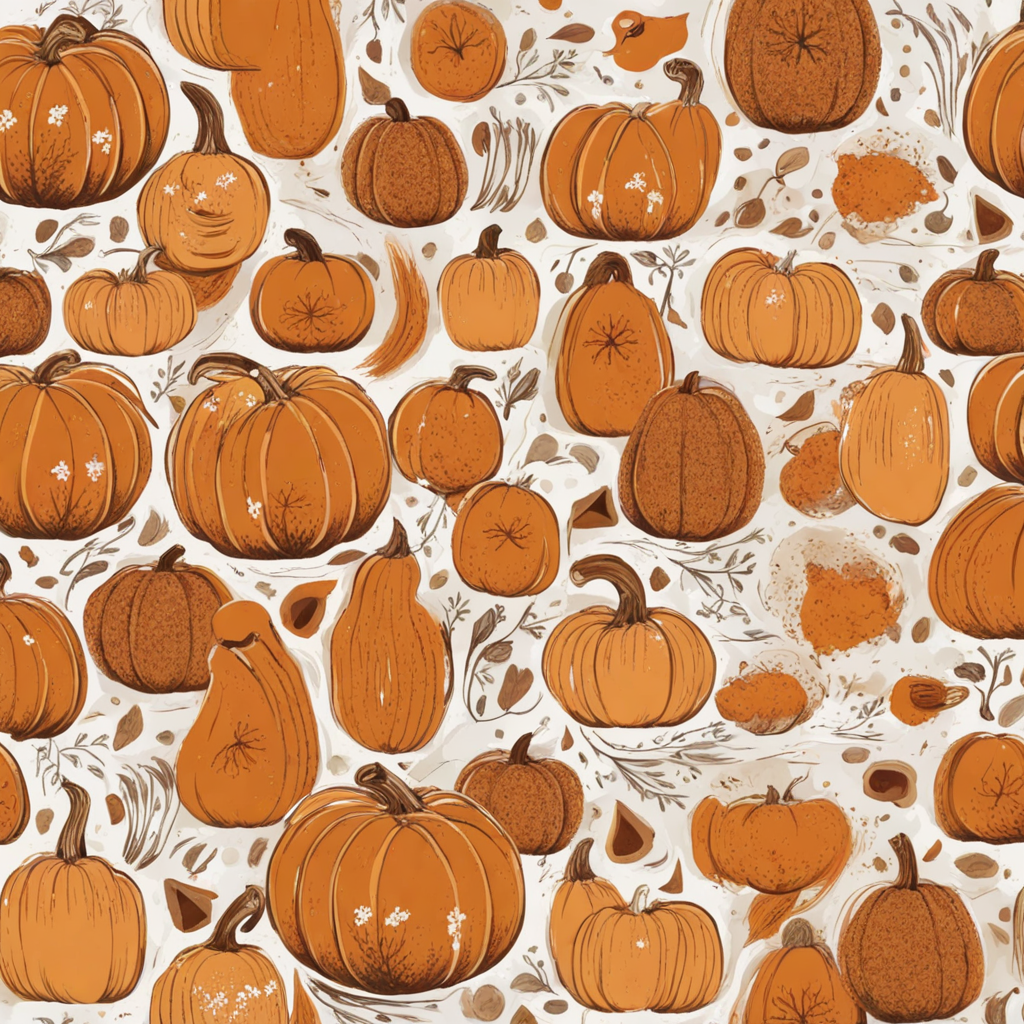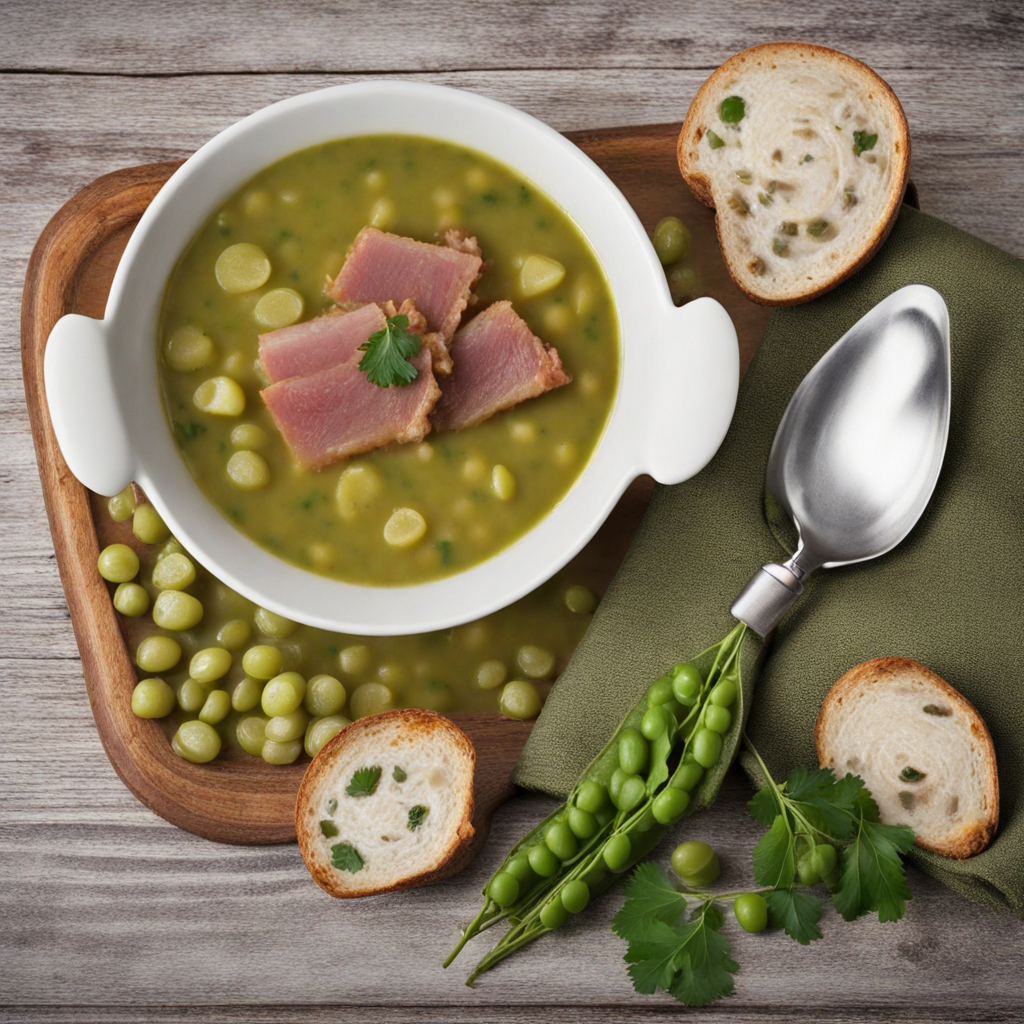Pumpkin Soup
Pumpkin soup from Estonia is a delightful and warming dish that embodies the essence of autumn. The soup is typically made with fresh, locally-grown pumpkins, which are roasted to enhance their natural sweetness. This creamy concoction often includes a blend of onions, garlic, and sometimes carrots, sautéed to create a rich base. The vibrant orange hue of the soup is not only visually appealing but also signals the rich flavors that await. Traditionally, the soup is finished with a splash of cream or a dollop of sour cream, adding a luxurious texture that balances the earthiness of the pumpkin. The flavor profile of Estonian pumpkin soup is a harmonious combination of sweet and savory notes. The pumpkin brings a subtle sweetness that is beautifully complemented by the savory depth of spices like nutmeg or ginger. Some variations may incorporate herbs such as thyme or sage, which add an aromatic quality to the dish. The use of vegetable or chicken stock enhances the overall flavor, making each spoonful a comforting experience. Each bowl is often garnished with roasted pumpkin seeds or a sprinkle of fresh herbs, adding a delightful crunch and a pop of color. Enjoying a bowl of Estonian pumpkin soup is not just a meal; it's an experience that connects you to the seasonal harvest and the local culinary traditions. The creamy texture and rich flavors make it a perfect starter for a cozy dinner or a hearty lunch. Pair it with a slice of rustic bread, and you have a dish that warms both the body and the soul. Whether enjoyed on a chilly day or as a celebration of the harvest season, pumpkin soup is a true testament to Estonia's love for simple yet exquisite flavors.
How It Became This Dish
The History of Kõrvitsasupp: Estonia’s Pumpkin Soup #### Origins Kõrvitsasupp, or pumpkin soup, is a beloved dish in Estonia, showcasing the country’s rich agricultural heritage and culinary traditions. The history of this dish can be traced back to the introduction of pumpkin (Cucurbita pepo) to Europe from the Americas in the late 15th century. Pumpkins were initially cultivated as ornamental plants, but their nutritious flesh and seeds soon made them a staple in many European cuisines. In Estonia, where the climate is conducive to growing a variety of squashes and gourds, pumpkin became a familiar ingredient in local cooking. The use of pumpkins in Estonian cuisine reflects the broader agricultural practices of the region, where seasonal produce is celebrated and utilized in daily meals. Traditionally, pumpkins were harvested in late summer to early autumn, aligning with the Estonian harvest festival, Jaanipäev (Midsummer Day), which is a time for community gatherings and feasting. #### Cultural Significance In Estonian culture, food is intertwined with tradition, history, and identity. Kõrvitsasupp is more than just a dish; it embodies the essence of Estonian rural life, where seasonal ingredients were utilized to create hearty meals that would sustain families through the long winters. Pumpkin soup, with its vibrant orange hue, is often associated with autumn, a season celebrated for its harvests and natural beauty. The dish is a symbol of the connection between the land and its people, representing the bounty of the earth and the importance of sustainable practices. It is also a dish that fosters familial ties, as many Estonians pass down recipes from generation to generation, often gathering for communal meals to enjoy seasonal dishes like Kõrvitsasupp. Moreover, the soup reflects a broader European trend of incorporating root vegetables and squashes into daily diets, especially during the colder months. In Estonian folk medicine, pumpkin is valued for its health benefits, including its high content of vitamins A and C, antioxidants, and dietary fiber, making it a staple in the diets of those who relied on home-cooked meals for nourishment. #### Development Over Time As Estonia underwent significant historical changes, from Swedish and Russian rule to independence and Soviet occupation, its culinary landscape evolved. Traditional recipes, including Kõrvitsasupp, were influenced by various cultural interactions, yet the core ingredients remained largely unchanged. In the early 20th century, the rise of nationalism in Estonia led to a renewed interest in traditional foods and recipes as a way to foster national identity. Home cooks began to embrace and preserve traditional dishes, including pumpkin soup, as symbols of Estonian heritage. This period saw a revival of local ingredients, with a focus on farm-to-table practices that emphasized seasonal and locally sourced produce. During the Soviet era, the availability of ingredients was often limited, and many traditional recipes were altered to accommodate the scarcity of certain foods. However, pumpkin soup remained popular due to the relative ease of growing pumpkins and the dish's versatility. Cooks adapted the recipe to include whatever vegetables were available, often incorporating carrots, potatoes, or even canned goods into the mix. With Estonia's regained independence in 1991, there was a culinary renaissance as chefs and home cooks began to explore and celebrate traditional Estonian cuisine. This resurgence included a renewed interest in seasonal cooking and the use of local ingredients. Kõrvitsasupp evolved during this time, with chefs experimenting with various spices, herbs, and dairy products to elevate the dish. The incorporation of ingredients like ginger, nutmeg, and cream added complexity to the flavor profile, making it a favorite in modern Estonian restaurants. In recent years, the global trend towards healthy eating and plant-based diets has further solidified the popularity of Kõrvitsasupp. The soup is often celebrated at food festivals and seasonal markets, where it is served alongside artisanal breads and other local delicacies. Cooking classes and culinary workshops focusing on traditional Estonian dishes often feature pumpkin soup, allowing new generations to learn about their culinary heritage. #### Modern Variations Today, Kõrvitsasupp is a versatile dish that can be prepared in countless ways. The basic recipe typically includes roasted pumpkin, onions, garlic, and vegetable or chicken stock, blended until smooth. Some recipes call for the addition of apples or pears for a hint of sweetness, while others introduce spices like cumin or coriander to give the soup an international flair. In contemporary Estonian cuisine, chefs often experiment with garnishes, adding a swirl of cream, croutons, or even pumpkin seeds for additional texture. There is also a growing trend towards vegan and vegetarian adaptations of the dish, using coconut milk instead of cream for a dairy-free option. This adaptability is a testament to the dish’s enduring popularity and its ability to evolve with changing culinary tastes. #### Conclusion Kõrvitsasupp is more than just a comforting bowl of soup; it is a reflection of Estonia’s agricultural roots, cultural heritage, and evolving culinary landscape. From its humble beginnings as a seasonal dish to its status as a cherished treat in modern Estonian kitchens, pumpkin soup embodies the spirit of resilience and innovation that characterizes Estonian cuisine. As Estonia continues to navigate its place in the global culinary scene, Kõrvitsasupp remains a beloved dish, symbolizing the connection between the past and present, and a celebration of the country’s rich agricultural bounty. Whether enjoyed at home during a family gathering or served in a trendy restaurant, Kõrvitsasupp will undoubtedly continue to warm hearts and fill bellies for generations to come.
You may like
Discover local flavors from Estonia







